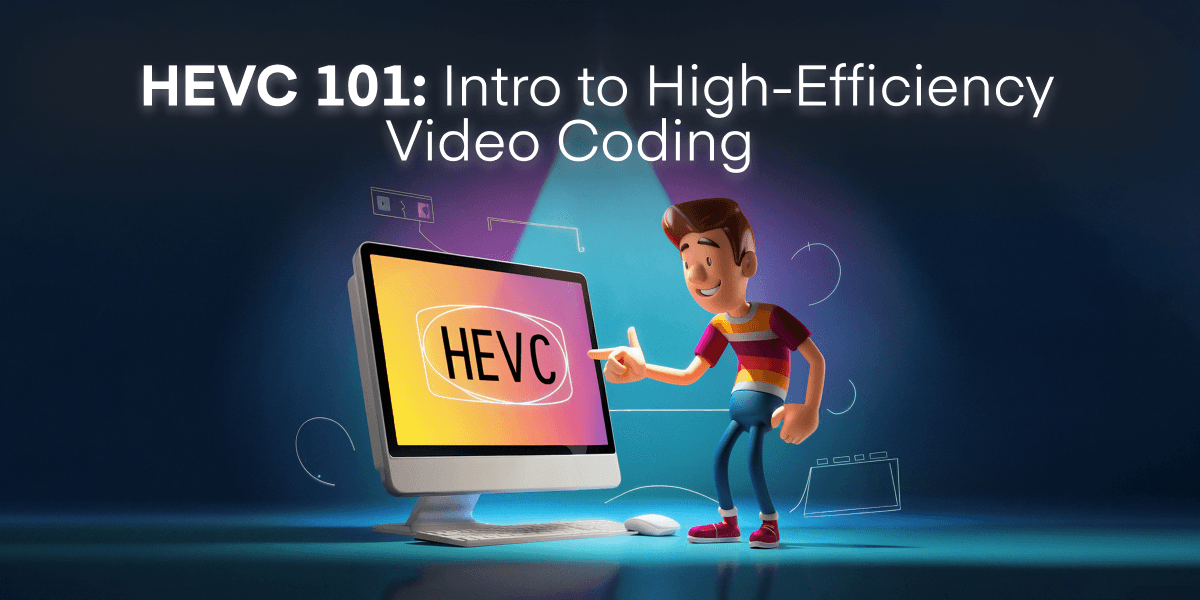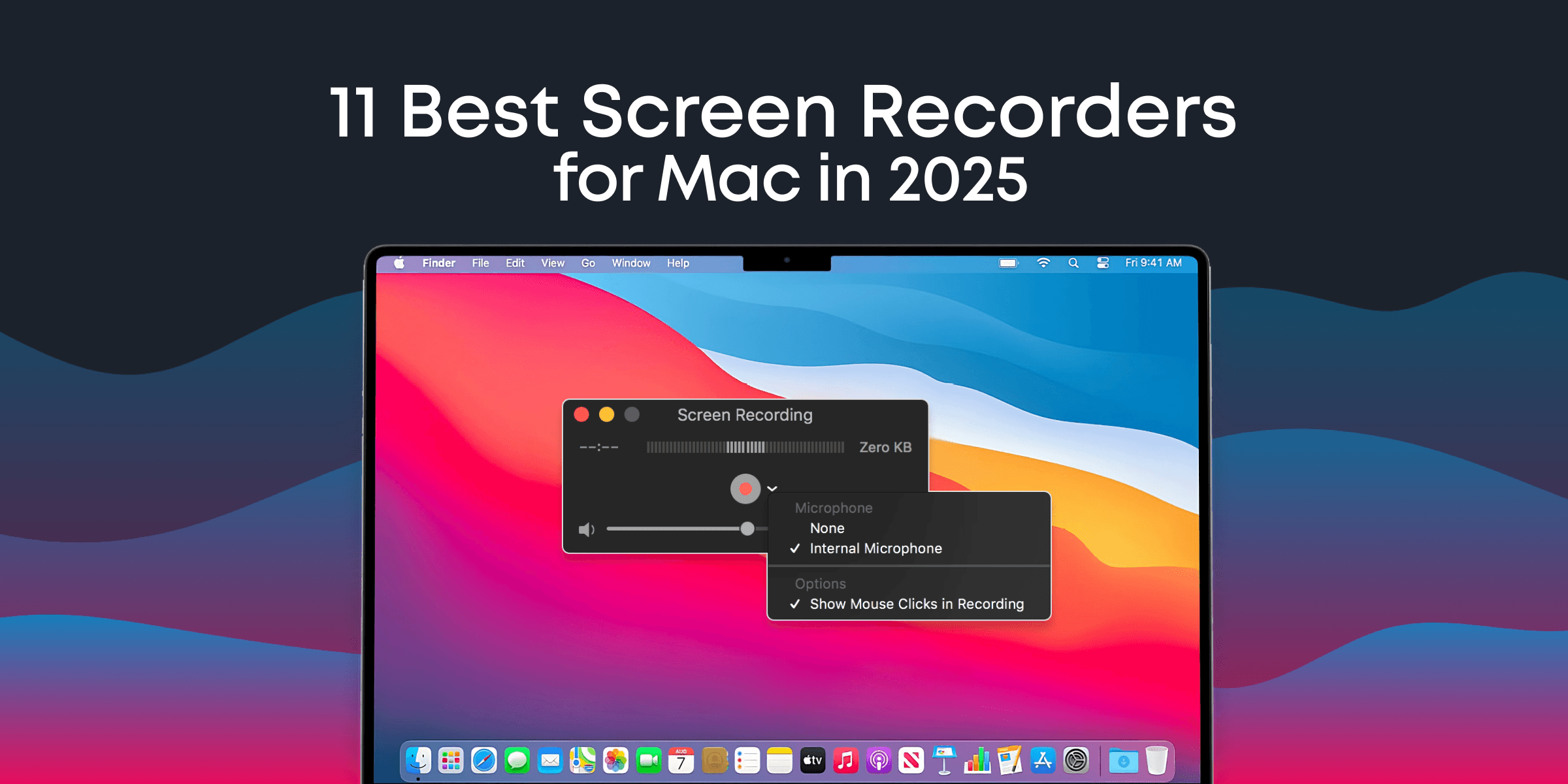Have you ever wondered how your favorite online videos stream so smoothly or how high-definition videos are compressed without losing quality? The secret lies in High-Efficiency Video Coding (HEVC). This comprehensive guide will walk you through everything you need to know about HEVC, helping you understand its significance and how you can leverage it to optimize your video content.
At Mixilab, we specialize in delivering cutting-edge video technology insights and tutorials. Whether you’re a content creator, video editor, tech enthusiast, or casual user, this resource is tailored just for you.
From its development history to practical implementation tips, we’ll cover all essential aspects of HEVC, ensuring you gain a thorough and accessible understanding that is ready to be applied in your projects. Join us on this journey to mastering HEVC!
Contents
What is a Video Codec?

At its core, a video codec (short for coder-decoder or compressor-decompressor) is a technology used to compress and decompress digital video files. When you record or stream a video, the raw footage contains a vast amount of data. This data, if left uncompressed, would require a lot of storage space and bandwidth for transmission.
Compression:
- Video codecs use advanced algorithms to reduce the size of the video file.
- They eliminate redundant or unnecessary data, significantly reducing file size without greatly sacrificing quality.
- This process is crucial for efficient storage and transmission of video content.
- It makes it feasible to stream high-definition videos online or store large video libraries on devices with limited space.
Decompression:
- Once the compressed video is stored or transmitted, the codec’s decompression process comes into play.
- This step reverses the compression algorithm to restore and playback the video in real time.
- Effective decompression ensures the video quality remains close to the original, providing a seamless viewing experience.
Many video codecs are available, each with its own features and use cases. Some of the most well-known codecs include H.264, VP9, and HEVC. Each codec is designed to balance various factors such as compression efficiency, quality, computational complexity, and compatibility with different devices and platforms.
Understanding the basics of video codecs is fundamental for anyone involved in video production, streaming, or casual viewing because it influences video quality, storage requirements, and playback performance.
What is HEVC?

High-Efficiency Video Coding (HEVC), also known as H.265, is a video compression standard that allows you to store, stream, and share high-quality videos more efficiently. Compared to H.264/AVC, it uses significantly less data.
Developed by the Joint Collaborative Team on Video Coding (JCT-VC) and finalized in 2013, HEVC improves video quality at half the bit rate of H.264. Its advanced encoding techniques set a new benchmark for video compression efficiency.
Integrated into streaming services and broadcasting, HEVC ensures high-quality video with improved motion compensation and spatial prediction. This leads to clearer images and smoother playback, especially for HD and UHD (4K) content, minimizing file sizes and buffering times as more content shifts to higher resolutions.
Understanding HEVC: Key Features had Innovations
High-Efficiency Video Coding (HEVC), also known as H.265, brings several groundbreaking features and innovations that distinguish it from its predecessors, like H.264. At its core, HEVC aims to deliver better compression efficiency, meaning it can reduce file sizes significantly while maintaining or even enhancing video quality.
- Improved Compression Efficiency: One of the standout features of HEVC is its ability to achieve up to 50% better compression compared to H.264. This means HEVC files are often half the size of H.264 for the same video quality. This efficiency is particularly beneficial in reducing storage needs and bandwidth consumption, making streaming and downloading videos faster and more economical.
- Larger Block Sizes: HEVC introduces a new block structure called Coding Tree Units (CTUs). Unlike the smaller macroblocks in H.264, CTUs can be as large as 64×64 pixels. This larger block size allows for more efficient compression, especially for high-resolution videos like 4K and 8K, by better accounting for spatial redundancies.
- Advanced Motion Compensation: To optimize how video frames predict motion, HEVC employs advanced motion compensation techniques. These include more complex motion vector prediction and better handling of varying motion speeds. As a result, HEVC can more accurately predict frame changes, reducing the amount of data required to represent motion.
- Flexible Partitioning: HEVC allows for flexible partitioning of video frames. It supports square and rectangular shapes for subdividing CTUs, which can be dynamically adjusted to fit the frame’s content better. This flexibility improves encoding precision, particularly in areas with intricate details.
- Higher Bit Depth and Color Accuracy: By supporting bit depths of up to 10 bits, HEVC enables more accurate color representation and smoother gradients. This capability is essential for High Dynamic Range (HDR) content, which requires higher color fidelity to display a broader range of brightness levels and colors.
- Enhanced Parallel Processing: HEVC is designed with parallel processing in mind. Tiles and Wavefront Parallel Processing (WPP) allows for more efficient use of multicore processors, speeding up the encoding and decoding processes. This design aspect makes HEVC particularly well-suited for modern hardware and software environments.
- Error Resilience and Robustness: HEVC includes mechanisms to improve error resilience, making it more robust against data losses. Features like Tiles help maintain video quality despite packet loss or corruption, making HEVC a reliable choice for unstable network conditions.
These key features and innovations collectively make HEVC a powerful and efficient video codec capable of meeting the demands of today’s high-resolution, high-quality video applications. Whether you are a content creator, video editor, or casual user, understanding these aspects of HEVC can help you make informed decisions about video encoding and playback.
HEVC in the Real World: Applications and Use Cases
HEVC has become a cornerstone in digital video, influencing various sectors and applications. By significantly improving compression efficiency and video quality, high-efficiency video coding is poised to become the preferred choice for real-world scenarios.
Streaming Services
Over 70% of streaming services have adopted HEVC, including leading streaming platforms like Netflix, Amazon Prime Video, and Hulu. This codec enables higher resolutions like 4K and 8K to be streamed efficiently, providing viewers with an exceptional visual experience even on slower internet connections.
Broadcasting
Broadcasters worldwide are shifting towards HEVC to manage the increasing demand for high-definition and ultra-high-definition content. HEVC enables broadcasters to offer superior video quality at lower bitrates, enhancing the viewing experience without compromising efficiency.
Video Production
Professional video editors and producers benefit from HEVC’s ability to maintain high-quality footage while significantly reducing file sizes. This is crucial for managing storage and improving the overall workflow, especially in industries like film and television, where large volumes of high-resolution content are standard.
Videoconferencing
With the rise of remote work, videoconferencing platforms have started leveraging HEVC to ensure smooth, high-quality video feeds. This codec helps to minimize latency and deliver clearer video streams, making virtual meetings more effective.
Gaming
In the gaming industry, HEVC is utilized for game streaming services and in-game video recording. Platforms like NVIDIA GeForce Now and Google Stadia use HEVC to offer seamless gameplay experiences over the cloud, ensuring minimal lag and high video fidelity.
Mobile Video
HEVC enables efficient video playback and recording on mobile devices. Smartphones and tablets incorporate HEVC to enhance video quality while optimizing storage space, supporting an expanding array of mobile video applications.
Virtual Reality (VR) and Augmented Reality (AR)
As VR and AR technologies advance, HEVC is critical in delivering the high-resolution, immersive video experiences these applications demand. The codec’s efficiency ensures smooth, high-quality visuals crucial for a compelling VR or AR environment.
HEVC’s diverse applications underscore its versatility and importance in the digital landscape. Whether you’re a content creator, a broadcaster, or a technology enthusiast, understanding and adopting HEVC can offer substantial benefits in terms of quality, efficiency, and overall user experience.
HEVC VS H.264: What Makes HEVC Superior?
Compression efficiency, quality, and compatibility are the most pivotal aspects to consider when evaluating video codecs. HEVC, or H.265, shines in many of these areas, setting itself apart from its predecessor, H.264. So, what makes HEVC superior?
- Higher Compression Efficiency: HEVC achieves up to 50% better compression than H.264 without sacrificing quality, facilitating faster streaming, quicker uploads, and reduced bandwidth usage.
- Enhanced Video Quality: HEVC supports higher resolutions like 4K and 8K, delivering clearer and sharper images with advanced encoding techniques.
- Improved Adaptive Bitrate Streaming: HEVC adjusts video quality in real-time based on network conditions, reducing buffering and enhancing viewing experiences.
- Robust Support for Modern Devices: HEVC is supported by the latest smart TVs, phones, and streaming devices, with software updates often bridging compatibility gaps.
- Efficient Use of Resources: HEVC optimizes computational resources, making encoding and decoding more efficient and crucial for live broadcasting and streaming.
- Future-Proofing: As content moves to higher resolutions, HEVC ensures your content remains relevant and accessible on newer platforms.
Overall, HEVC offers a compelling upgrade over H.264, making it the codec for those looking to balance superb video quality with optimal file sizes.
Exclusive Download: Export HEVC Videos with Animotica
Ready to elevate your video quality with HEVC encoding? Try using Animotica, our user-friendly video editor that makes exporting HEVC videos a breeze. Whether you’re a content creator, video editor, or casual user, Animotica offers a seamless experience for optimizing your video files without sacrificing quality.
Here’s a quick guide on how to export HEVC video in Animotica:
- Launch Animotica and Start a New Project: After installation, open Animotica. You will be greeted with a clean and accessible user interface designed to be intuitive, even for beginners. Click “New Project” to start adding your media.

- Import Your Video: Select your video or photo files. You can add clips through Files Explorer or drag and drop them in Animotica.

- Edit Your Video: You can easily adjust your video’s overall quality and appearance by making any desired edits using Animotica’s array of tools, including trimming, cropping, adding transitions, GIFs, stickers, applying filters, and even adding a voiceover.

- Export in HEVC Format: Once your edits are complete, click the “Export” button. Choose MP4/HEVC (H.265) in the export settings as your preferred video codec. Customize additional settings like resolution and bitrate as needed. Also, feel free to check our Animotica’s guide on best exporting settings.

Animotica will process your video, applying the HEVC codec to ensure it delivers high-quality playback with reduced file size. This method is beneficial for sharing videos on platforms where quality and storage efficiency are key.
Download Animotica today to start exporting your videos in HEVC and experience the benefits of this advanced video coding technology!
Final Thoughts
In wrapping up our guide on High-Efficiency Video Coding (HEVC), we’ve explored its advanced features and highlighted its superiority in the video coding landscape. HEVC’s superior compression efficiency allows smaller file sizes without sacrificing quality, featuring innovations like larger block sizes and advanced motion compensation.
HEVC’s flexibility in partitioning, enhanced parallel processing, and increased error resilience make it robust for diverse applications. Whether streaming shows, working on video production, or exploring VR and AR, HEVC is versatile and efficient.
We’ve also covered compatibility challenges and licensing issues that might affect HEVC use. By recognizing these hurdles and offering solutions, we ensure you can leverage HEVC’s benefits across devices and platforms.
Engage with our community by sharing your thoughts and questions. Subscribe to our newsletter for more insights and explore Animotica—an intuitive video editing tool that simplifies your journey into HEVC.
Understanding and implementing the knowledge shared in this guide allows you to utilize HEVC in your projects, ensuring high quality and efficiency in every frame.
FAQ
Why can’t I play HEVC videos on a Windows PC?
Many Windows PCs face issues playing HEVC videos due to the lack of built-in support. Unlike popular codecs, HEVC requires specific software or hardware capabilities to decode and play videos efficiently.
One common reason for this problem is the need for the necessary codec in the operating system. Windows 10 and later versions do not come with the HEVC codec pre-installed. You need to download it from the Microsoft Store or rely on third-party media players supporting HEVC.
- Absence of Codec: HEVC is not pre-installed in Windows. You must download it from the Microsoft Store or use third-party media players.
- Hardware Limitations: Older hardware may struggle with HEVC playback due to higher processing requirements. With hardware acceleration, smooth playback may be possible.
- Software Compatibility: Common media players like Windows Media Player or older VLC versions may not natively support HEVC. Installing the latest versions can resolve these issues.
- Licensing and Patent Issues: HEVC is a patented technology, and incorporating support involves licensing fees. Some developers exclude HEVC support to avoid these costs, affecting your ability to play these videos.
The inability to play HEVC videos on a Windows PC typically stems from a lack of appropriate codecs, outdated hardware, and software limitations. You should install necessary updates and use media players with extensive codec support.
How does HEVC compare to newer video coding standards?
HEVC has set a high bar in video coding, but new standards are emerging, continually advancing the technology. Two notable successors are Versatile Video Coding (VVC) and AOMedia Video 1 (AV1).
- Versatile Video Coding (VVC): Also known as H.266, VVC is designed to achieve better compression efficiency than HEVC. It maintains similar quality levels at approximately 50% lower bitrates, making it highly effective for 4K and 8K content. VVC introduces additional coding tools, such as multiple transform selections and advanced block partitioning, enhancing flexibility and performance.
- AOMedia Video 1 (AV1): AV1 is an open-source, royalty-free video codec developed by the Alliance for Open Media. It aims to reduce data usage while providing high-quality video, making it particularly attractive for streaming services. While currently less efficient than VVC, it benefits from broad industry support and compatibility, especially in web browsers and mobile devices.
In summary, while HEVC remains a robust and widely used standard, VVC and AV1 offer promising advancements. The choice between these codecs will depend on specific use cases, licensing considerations, and infrastructure capabilities.
How does HEVC enhance streaming performance?
HEVC enhances streaming performance primarily through the following key features:
- Outstanding Compression Efficiency: Compared to its predecessor, H.264, HEVC achieves higher compression ratios, reducing the bitrate needed for high-quality video streams. This means smoother playback, even on slower internet connections, minimizing buffering and improving the overall user experience.
- Support for Higher Resolutions and Frame Rates: As 4K and 8K content become more prevalent, HEVC’s ability to optimize high-definition streams without a proportional increase in data load allows content providers to offer superior quality without overwhelming network bandwidth.
- Advanced Encoding Techniques: HEVC incorporates techniques like motion compensation and prediction, enhancing the accuracy of frame prediction. This results in more efficient data usage and decreases the likelihood of visual artifacts, ensuring viewers enjoy a seamless and crystal-clear streaming experience.
- Scalable Video Coding (SVC): HEVC supports SVC, enabling adaptive streaming. This allows video quality to adjust dynamically based on the viewer’s network conditions, delivering the best possible quality at any moment.
As a result, HEVC plays a crucial role in providing reliable and high-quality streaming services to diverse audiences worldwide.
You Might Also Like:
How to Make a Slideshow on TikTok
How to Screen Record YouTube Videos on Any Device
50+ Trendy YouTube Video Ideas to Try in 2024
13 Best Green Screen Software For Windows (2024)
The Ultimate Guide to Explainer Videos: From A to Z
Top 8 Best Free Screen Recorders in 2024
Say Goodbye to Boring Profile Pictures: Picofme.io by Mixilab





